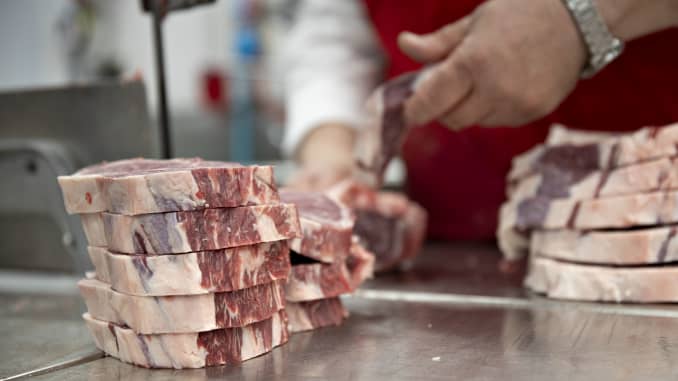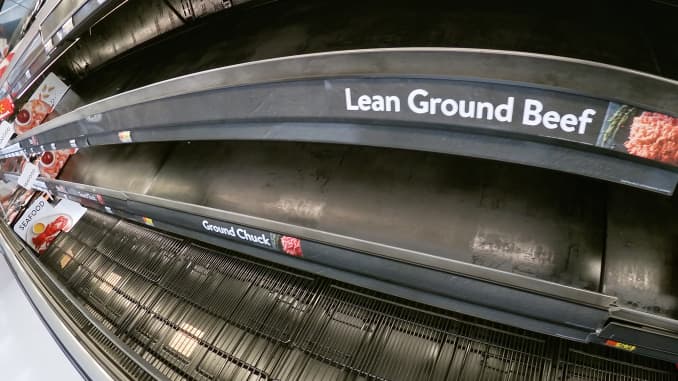As the coronavirus pandemic disrupts supply chains across the country, farmers are being forced to destroy their crops, dump milk and throw out perishable items that can’t be stored.
With restaurants and schools shuttered during national lockdown, prices and demand for essential agricultural products has fallen. Farmers who have already endured a slew of financial hardships over the past few years — from the U.S.-China trade war that sent scores of farms out of business to floods that wiped out entire harvests — are now left with an abundance of food that they can’t sell.
President Donald Trump recently announced a $19 billion relief program, called the Coronavirus Food Assistance Program, that will provide $16 billion in payments to farmers and ranchers and $3 billion in purchases of fresh produce, dairy products and meat to be distributed at food banks. The program follows a different aid package that the Department of Agriculture implemented for farmers hit by trade war tariffs.
The president also signed an executive order this week requiring American meatpacking plants to stay open during the pandemic. The order was aimed at preventing a breakdown in the nation’s food supply chain, which is under severe stress at the moment.
Surplus potatoes
Farmers in Washington state are facing a surplus of one billion pounds of potatoes due to restaurant and school closures, according to the Washington Potato Commission.
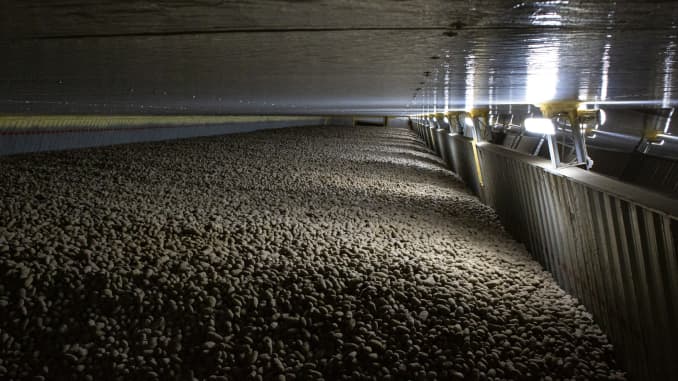
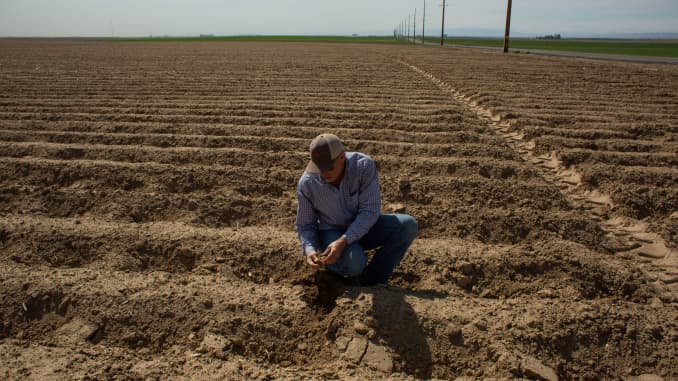
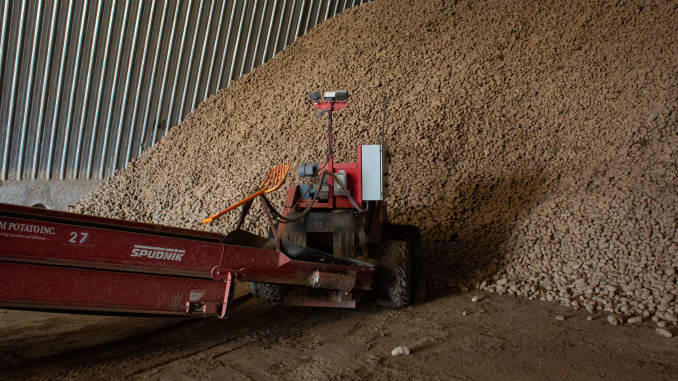
Fresh produce rotting as demand dries up
Fresh produce is going to waste during the virus outbreak as supply chains crumble and farmers have trouble selling food. At least $5 billion of fresh fruits and vegetables have already been wasted, according to estimates from the Produce Marketing Association, as many farmers plow ripe crops back into the soil.
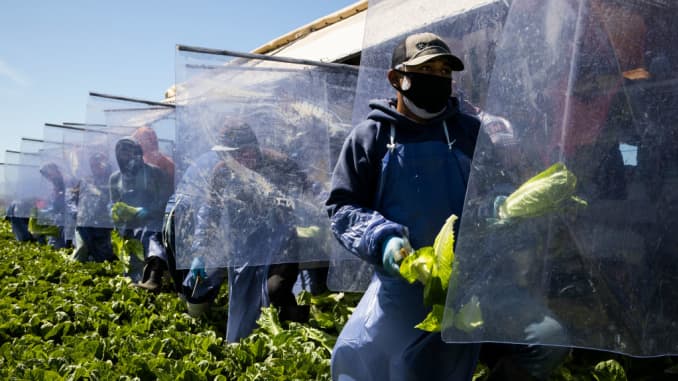
There has been a drastic reduction in activity in the food service industry as restrictions are implemented to slow the spread of coronavirus. Many fields like this are being plowed under because of the expense of harvesting and the lack of profit.

Farm laborers practice social distancing, and use masks, gloves, hair nets and aprons.
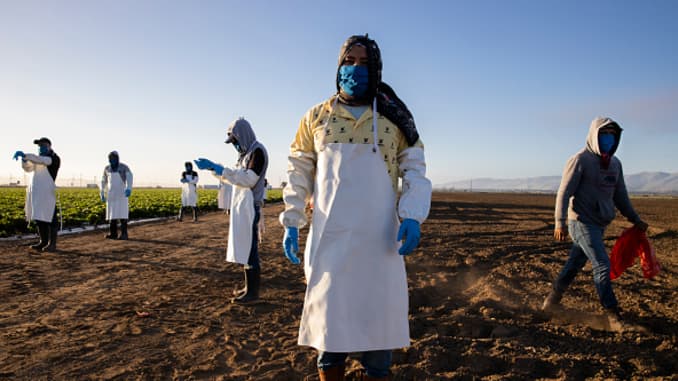
Farm laborers with Fresh Harvest wash their hands before work.
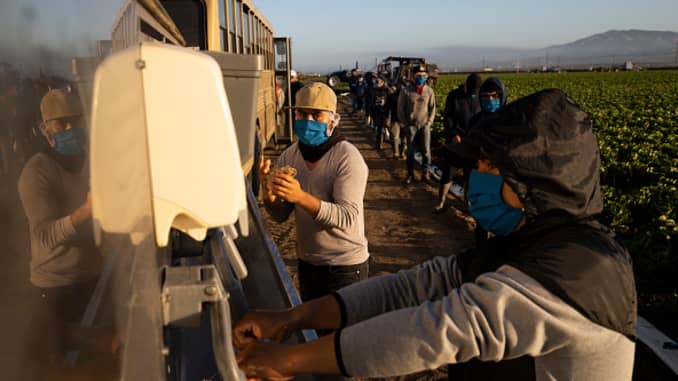
The pickle-variety cucumbers were being given to a local cattle rancher as feed. Long & Scott Farms cucumbers are normally destined for restaurants but a large percentage of them are now being discarded or are rotting in fields.
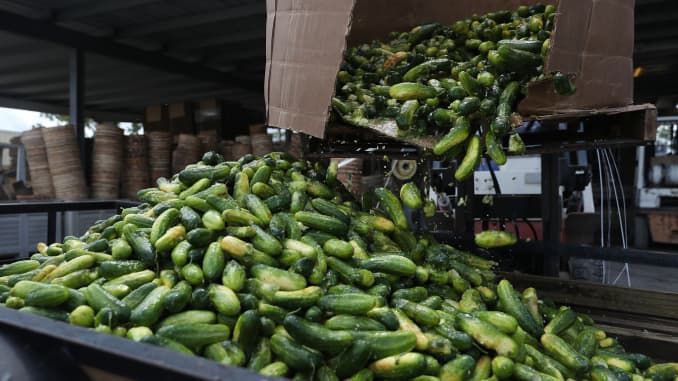
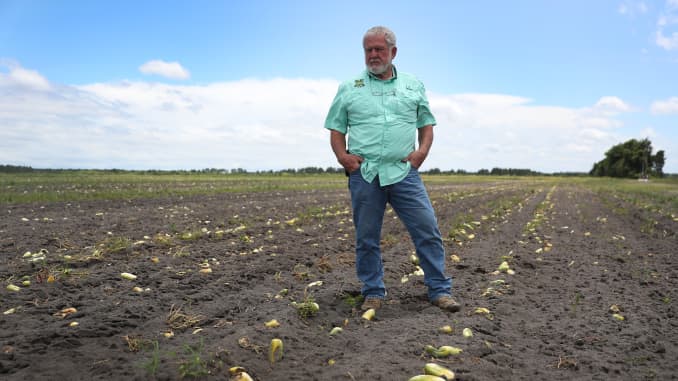
Many South Florida farmers are saying that the coronavirus pandemic has caused them to have to throw crops away due to less demand for produce in stores and restaurants.
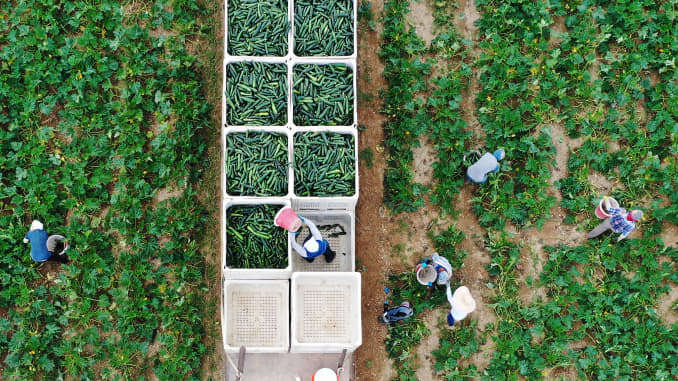


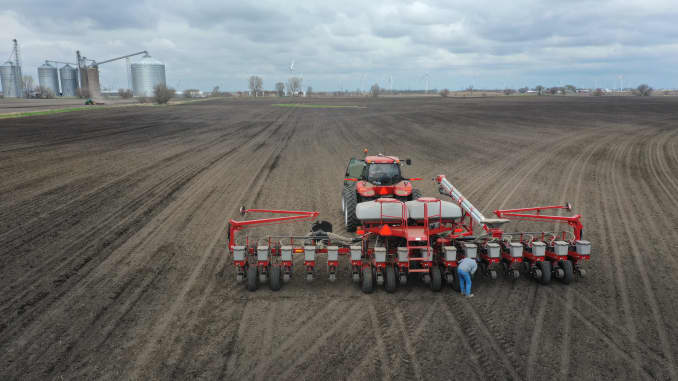
Pork in Smithville, Ohio
Virus outbreaks in pork-processing plants have caused several plants to shut down, leading to overcrowding of pigs in barns and discussions over euthanizing thousands of hogs in order to deal with capacity. John Tyson, chairman of Arkansas-based Tyson Foods, has warned that plant closures due to the pandemic will result in the loss of millions of animals like chickens, pigs and cattle.

The Agriculture Department will establish a “coordination center” to help livestock and poultry producers hurt by coronavirus-induced meatpacking plant closures.
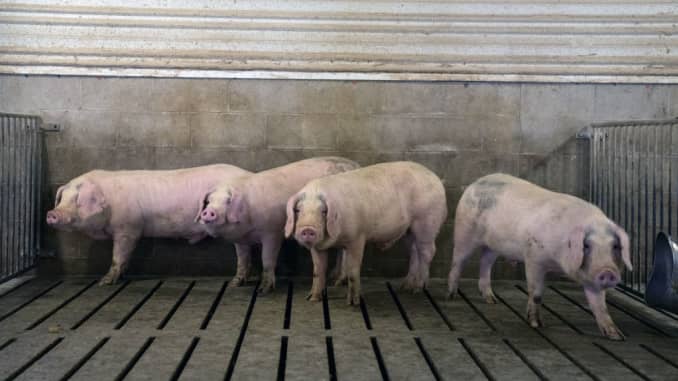

Dairy farms face weak demand
Dairy farmers grappling with low prices and a sudden drop in demand from the pandemic lockdown are dumping out as many as 3.7 million gallons of milk every day, according to estimates from Dairy Farmers of America, the country’s largest dairy cooperative.
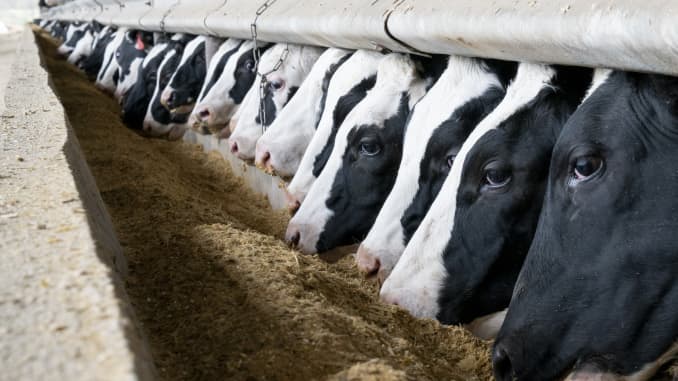
The herd manager at Stone-Front Farm looks over dairy cows in a barn in Lancaster, Wisconsin.
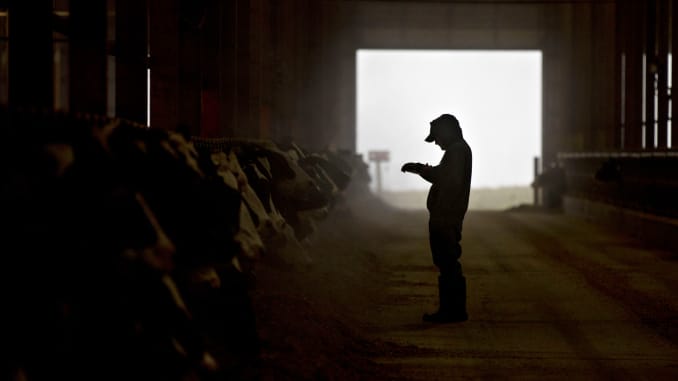
Alfred Brandt milks his Holstein cows on the dairy farm, which has been in his family since 1840 and has been affected by the industry’s supply chain disruptions created by Covid-19, in Linn, Missouri.
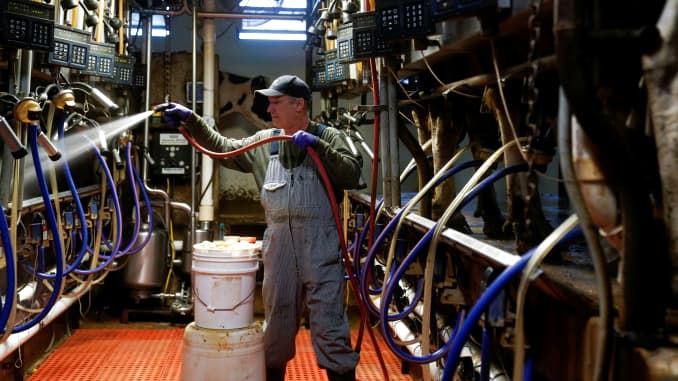
Lima Ranch owner Jack Hamm looks over his dairy cows as they feed in Lodi, California.

Pictured below is a cheese creamery in Gallipolis, Ohio. The Trump administration would like to make purchases of milk and meat products as part of a $15.5 billion initial aid package to farmers rattled by the coronavirus, said Agriculture Secretary Sonny Perdue.
Empty chicken houses
Chicken processors dealing with staffing problems related to the coronavirus have been forced to euthanize chickens because of the reduced capacity in processing plants.
In Albany, Minnesota, Kerry and Barb Mergen stand outside their now-empty chicken house with a straggler who managed to elude the crew that came in just before Easter to euthanize the other 61,000 laying hens in their flock. The Mergens were contract chicken farmers until demand plummeted and the owner of their chickens, Daybreak Foods, decided to cut their losses and euthanize the flock.
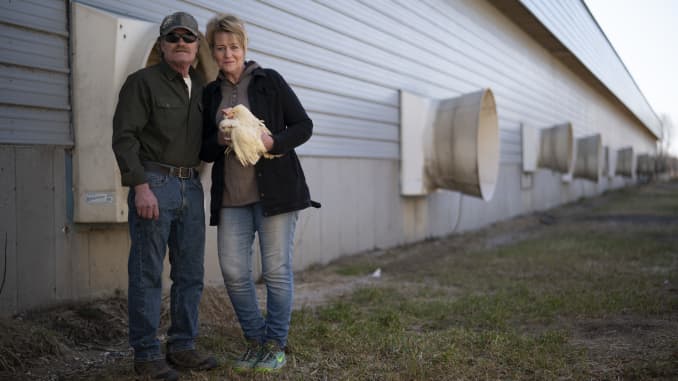
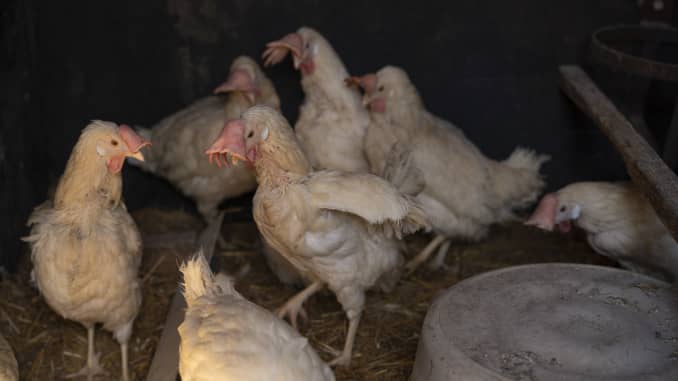
Chickens arrive by truck at the Wayne Farms processing plant in Albertville, Alabama.
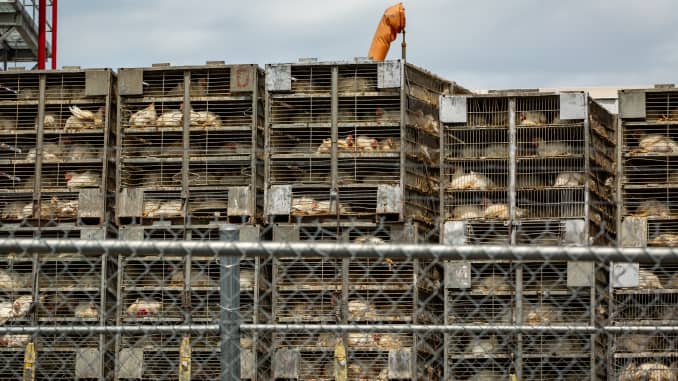
Empty poultry shelves at a Whole Foods Market in Vauxville, New Jersey.
Mushroom farm loses restaurant revenue
In Lenhartsville, Pennsylvania, mushroom farmer Matt Sicher is adapting to changes in his business as a result of coronavirus. He has lost lucrative revenue from restaurants in New York City that have closed. As a result, mushroom farmers are shifting from selling to restaurants, to retail, selling to individuals.
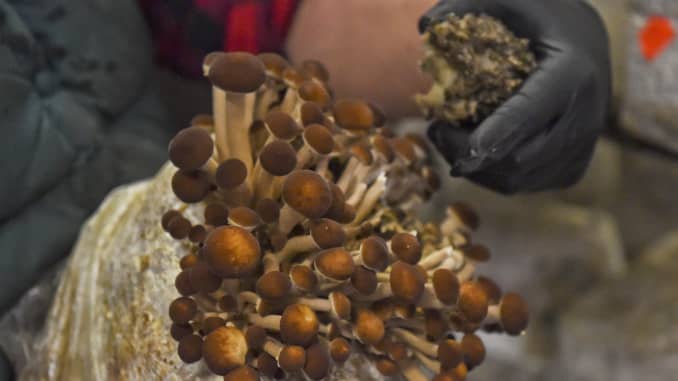
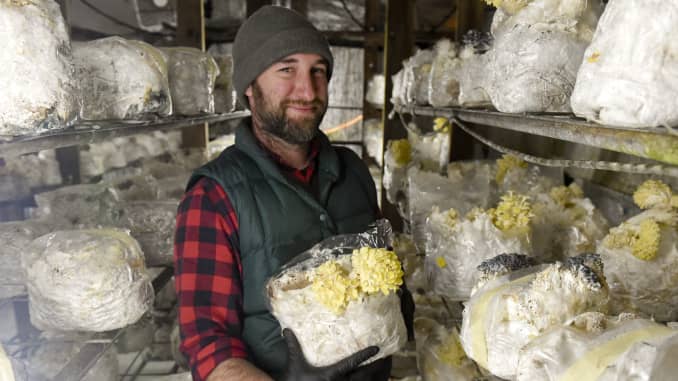
Beef supply hit by slaughterhouse closures
Many Americans are bracing for a meat shortage after the virus shut down some of the country’s largest slaughterhouses. Trump on Tuesday signed an executive order to keep meat-processing plants operating during the pandemic even though many have become virus hotspots.

